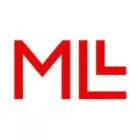Swiss National Bank introduced negative interest rates In December 2014, the Swiss National Bank ("SNB") announced the introduction of negative interest rates on sight deposits by financial institutions with the SNB. The main intention was to diminish the pressure on the then pegged rate of EUR/CHF 1.20. In January 2015, the SNB gave up on the peg with the immediate consequence of a substantial soar in the Swiss Franc. In order to prevent further unfavourable outcomes (especially for export oriented enterprises) the SNB tightened its negative interest rates by lowering its three-month London Interbank Offered Rates ("3-month CHF Libor") to –0.75 % and moved the target range for the 3-month CHF Libor down to –1.25 % and –0.25 %.
We explain below how negative interest rates can affect hedging transactions, in particular, interest rate swaps that are linked to the 3-month CHF Libor.
Does a negative interest rate constitute "interest"?
Switzerland has seen negative interest rates before. When in the 1960's and 1970's, the SNB imposed negative interest rates, the measure was restricted to funds from abroad. Back then, the Swiss Supreme Court decided that negative interests were commissions. It is unclear, however, whether that view would still be upheld today and in the current context.
Scenario
Let's assume that a Swiss company borrows Swiss francs at a floating rate of interest based on the 3-month CHF Libor. In order to protect itself from potentially increased financing costs under such floating rate borrowing, the company enters into an interest rate swap with a swap dealer. The swap contract provides that on the one side, the swap dealer pays a floating rate of 3-month CHF Libor plus a spread of 0.5 % to the Swiss company, and on the other side the Swiss company pays a fixed rate of 2 % to the swap dealer. The bottom-line of the arrangement is that the Swiss company ends up with fixed rate financing costs of 1.5 % = 2 %-0.5 %.
Since the 3-month CHF Libor has been set to –0.75 %, the Swiss company will have to make a payment to the swap dealer, to account for the fact that the referenced floating rate has gone negative by an amount in excess of the spread of 0.5 %. The Swiss company will have to pay the swap dealer 0.25 % = –(–0.75 %+0.5 %) in addition to the fixed rate payment of 2 % that it owes under the swap contract. However, this is only true if the swap contract allows for an interest to be negative and a swap to be comprised of a unilateral payment only (and, hence, not really a swap of payments).
Swap under ISDA Agreement
Assuming that the 2006 ISDA Definitions published by the International Swaps and Derivatives Association (ISDA) apply, the counterparties to the swap contract can decide whether they want to employ the "Floating Negative Interest Rate Method" or the Zero Interest Rate Method" (see Section 6.4 of the 2006 ISDA Definitions). Under the "Floating Negative Interest Rate Method", the swap dealer would have to pay nothing if the floating rate is negative, and the Swiss company would have to pay the fixed rate plus the negative interest (i.e. 2 % plus 0.25 % as above). In contrast, no negative interest would have to be paid by the Swiss company if the counterparties have chosen the "Zero Interest Rate Method".
However, it is wise to be cautious as under the 2006 ISDA Definition the "Floating Negative Interest Rate Method" applies as the default method, i.e. if the parties have been silent on negative interests.
The content of this article is intended to provide a general guide to the subject matter. Specialist advice should be sought about your specific circumstances.


